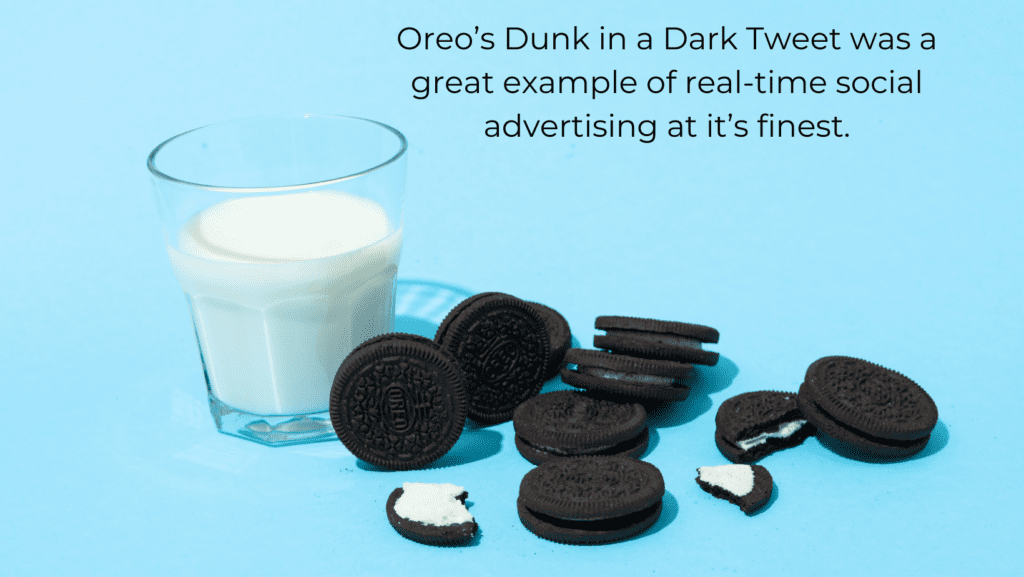In the ever-evolving landscape of business and commerce, effective marketing campaign management is paramount to ensuring your brand’s visibility and success.
If you are just starting to manage a team of marketers, and are feeling uncertain about launching your first campaign, we’re here to help.
Managing a marketing campaign well involves a balance of strategy, planning, and willingness to make moves.
This comprehensive guide is designed to help you navigate through the intricate process of managing a marketing campaign and the team working on it.
We have a lot of experience with running great marketing campaigns at MOCK, the Agency.
We will delve into the various stages, from planning and implementation to monitoring and evaluation, equipping you with the necessary tools and knowledge to execute successful, result-driven marketing campaigns.
Here’s what we’ll cover to get you on the road to success:
Marketing Campaign Basics
- What are the 5 essential parts of marketing campaigns?
- What is considered a successful marketing campaign?
- What are the types of marketing campaigns?
- What are some examples of successful digital marketing campaigns?
Strategy
- What are the 3 steps in a campaign strategy?
- What is the difference between a campaign plan and a campaign strategy?
Plan
- What are the 7 steps of a marketing plan?
- How do you structure a marketing campaign plan?
Doing a great Job
- Marketing campaign planning tools
- How to Prioritize in a Marketing Time-Crunch
- Responding to Bad Branding Events
- How to Produce Great Marketing Collateral in a Short Amount of Time
- Don’t forget the People: Helping your team win
Marketing Campaign Basics

What are the 5 essential parts of marketing campaigns?
For your marketing campaign management to be successful, it should typically include five essential components:
Clear Objectives
Clearly defined objectives are the foundation of any marketing campaign.
Your whole team should know them and they should be specific, measurable, attainable, relevant, and time-bound (SMART).
They provide direction and help measure the success of your campaign.
Examples of objectives could be increasing brand awareness, driving website traffic, generating leads, or boosting sales.
Target Audience
Identifying and understanding your the people you want to reach is crucial for effective campaign planning.
Define your ideal customer persona based on demographics, behaviors, preferences, and needs.
Segmenting your audience allows you to tailor messages, choose appropriate channels, and deliver targeted content that resonates with them.
Compelling Messaging
Crafting compelling and persuasive messaging is key to capturing your audience’s attention and driving engagement.
Your messaging should communicate the unique value proposition of your product or service, address pain points, and highlight the benefits that people will gain.
Use clear, concise, and impactful language that aligns with your brand voice and resonates with your target audience.
Strategic Channels and Tactics
Selecting the right marketing channels and tactics is crucial for reaching and engaging your target audience effectively.
Leverage various channels such as social media, email marketing, content marketing, paid ads, public relations, and influencer partnerships.
Tailor your channel selection based on what those people prefer and how they behave, and consider the goals and budget of your campaign.
You need to figure out the best way to get your message across.
Measurement and Analysis: Campaign Analytics
Assessing the effectiveness of your marketing campaign is vital for continuous improvement.
Set up appropriate measurement metrics and tools to track key performance indicators (KPIs) related to your campaign goals.
Analyze data regularly to gain insights into campaign performance and make informed decisions for optimization.
Adjust your strategies and tactics accordingly based on the results to ensure a successful campaign.
Remember, these components should work together cohesively to create a comprehensive and well-executed marketing campaign.
What is considered a successful marketing campaign?
Defining success for a marketing campaign depends on the what the purpose of the campaign is.
Here we go back to the goals again.
Success can be measured using various metrics and indicators.
Here are a few common ways to define success for a marketing campaign:
Achievement of Objectives
Success can be determined by evaluating whether you have achieved the objectives you set for your campaign.
For example, if your goal was to increase brand awareness, success would be measured by an increase in brand recognition, mentions, or website traffic.
Return on Investment (ROI)
Assessing the financial impact of your campaign is another way to measure success.
Calculate the ROI by comparing the revenue generated or cost savings achieved against the investment made in the campaign.
A positive ROI indicates a successful campaign.
Lead Generation and Conversion
If your campaign’s objective is to generate leads or drive conversions, success can be measured by the number of qualified leads generated or the conversion rate achieved.
Analyze how effectively your campaign has moved prospects through the sales funnel.

Engagement and Interaction
Success can also be determined by the level of engagement and interaction your campaign receives.
Track metrics like social media likes, shares, comments, email open rates, click-through rates, or website engagement to gauge the effectiveness of your campaign in capturing audience attention and driving interaction.
Brand Perception and Reputation
Assessing the impact of your campaign on brand perception and reputation is important.
Conduct surveys, monitor online sentiment, or analyze customer feedback to evaluate whether your campaign has positively influenced brand perception and improved your brand’s reputation.
Market Share or Competitive Advantage
Success can be measured by the impact on market share or competitive advantage.
Assess if your campaign has helped you gain market share, outperform competitors, or position your brand as a leader in the industry.
It’s essential to define success criteria before launching a campaign, aligning them with overall business goals, and tracking relevant metrics to evaluate performance.
What are the types of marketing campaigns?
There are several basic types of marketing campaigns that businesses commonly use to achieve their marketing objectives.
Here are a few examples:
Brand Awareness Campaigns
These campaigns aim to increase awareness and recognition of a brand among the target audience.
They focus on building brand awareness by showcasing the unique value proposition, creating memorable brand experiences, and reaching a wide audience through various channels.
This is all about your message to the people that determine how they think about your company.
Lead Generation Campaigns
These campaigns are designed to capture potential customer information and generate leads for further nurturing and conversion.
Lead generation campaigns often involve offering valuable content, such as e-books, webinars, or free trials, in exchange for contact details or opt-ins.
Product Launch Campaigns
These campaigns revolve around introducing a new product or service to the market.
The goal is to create excitement, generate buzz, and drive initial sales.
They typically include teaser campaigns, pre-launch activities, and targeted efforts to build anticipation and interest among potential customers.
Sales Promotion Campaigns
These campaigns focus on driving short-term sales by offering incentives, discounts, or limited-time promotions.
They aim to create a sense of urgency and encourage immediate purchase decisions.
Sales promotion campaigns can be particularly effective during seasonal events, holidays, or special occasions.

Content Marketing Campaigns
These campaigns leverage valuable and relevant content to engage and educate the target audience.
Content marketing campaigns may include blog posts, videos, infographics, podcasts, or social media content.
The goal is to attract, inform, and build trust with potential customers, ultimately driving conversions.
Social Media Campaigns
These campaigns specifically utilize social media platforms to reach and engage the target audience.
They involve creating engaging content, leveraging influencers, running contests or giveaways, and encouraging user-generated content to increase brand visibility, engagement, and follower growth.
Customer Retention Campaigns
These campaigns aim to retain existing customers and foster loyalty.
They often involve personalized communication, exclusive offers, loyalty programs, and post-purchase follow-ups to ensure customer satisfaction and encourage repeat purchases.
These are just a few examples, and marketing campaigns can vary depending on the industry, target audience, and specific goals of the business.
It’s important to select the campaign type that aligns with your objectives and target audience while considering the resources and budget available.
What are some examples of successful digital marketing campaigns?
- #ShareACoke by Coca-Cola: This campaign encouraged customers to share their personalized Coke bottles on social media, resulting in a 2% increase in revenue and over 500,000 photos shared using the hashtag.
- ALS Ice Bucket Challenge: This viral challenge raised awareness and over $115 million for ALS research by encouraging people to share videos of themselves dumping ice water on their heads and donating to the cause.
- Old Spice “The Man Your Man Could Smell Like”: This humorous and memorable campaign boosted brand recognition, sales, and social media engagement by featuring a charismatic spokesman and creating a series of viral videos.
- Airbnb’s Live There Campaign: This campaign utilized user-generated content to showcase the unique experiences offered by Airbnb, resulting in a 50% increase in bookings within the first month of its launch.
- Always’ #LikeAGirl: This empowering campaign challenged gender stereotypes and resonated with audiences worldwide, earning over 90 million views on YouTube and numerous awards for its impact.
- Nike’s “Just Do It”: This long-running campaign has become an iconic slogan, resonating with athletes and non-athletes alike while boosting brand recognition and sales for Nike.
- Dove Real Beauty Campaign: This campaign aimed to challenge traditional beauty standards and promote self-esteem by featuring diverse women in their advertisements, resulting in increased brand loyalty and positive perception.
- Taco Bell’s “Tweeting At Midnight” Campaign: This clever campaign capitalized on late-night cravings by sending targeted tweets to users who mentioned being hungry after midnight, resulting in a 60% conversion rate.
- Oreo’s “Dunk in the Dark” Tweet: During the Super Bowl blackout of 2013, Oreo quickly tweeted a clever ad with the caption, “You can still dunk in the dark,” resulting in widespread brand recognition and praise for their quick thinking.

These are just a few examples of successful digital marketing campaigns.
Each campaign had a unique approach, creative messaging, and engaged audiences through various digital channels, leading to significant brand impact and success.
Strategy
What are the 3 steps in a campaign strategy?
Developing a marketing campaign strategy involves several key steps that help ensure its success. Here are three important steps to consider when creating a marketing campaign strategy:
Step1: Define Your Goals
The first step in developing a marketing campaign strategy is to clearly create and define your goals.
What do you want to achieve with your campaign?
Whether it’s increasing brand awareness, generating leads, driving sales, or launching a new product, setting specific and measurable goals will guide your entire strategy.
Step 2: Know Your Target Audience
To succeed in any marketing campaign, you have to get inside the head of your target audience.
Conduct market research to identify your ideal customers’ demographics, interests, needs, and pain points.
This information will enable you to tailor your messaging and tactics to resonate with your audience, increasing the likelihood of engagement and conversion.
Step 3: Plan Your Tactics
Once you have defined your goals and understood your target audience, it’s time to plan your tactics.
Determine the channels and platforms you will use to reach your audience, such as social media, email marketing, content marketing, or paid advertising.
Create a content calendar outlining the specific messages, offers, and campaigns you will deploy throughout the campaign period.
Remember that a successful marketing campaign strategy is not static.
It requires ongoing monitoring, analysis, and adjustments to optimize results.
Regularly evaluate the performance of your campaign and make necessary refinements to ensure its effectiveness.
What is the difference between a campaign plan and a campaign strategy?
While the terms “campaign plan” and “campaign strategy” are often used interchangeably, there is a distinction between the two in the context of marketing.
A campaign strategy refers to the overall approach and high-level thinking behind the marketing campaign.
It involves setting objectives, identifying target audiences, and determining key messages and positioning.
The campaign strategy outlines the direction and rationale for the campaign, guiding all subsequent planning and execution.
On the other hand, a campaign plan is a detailed document that lays out the specific tactics, activities, and timelines required to implement the campaign strategy effectively.
It breaks down the strategy into actionable steps, outlining the resources needed, roles and responsibilities, budget allocation, and metrics for measuring success.
Basically, the campaign strategy provides the strategic framework, while the campaign plan provides the operational roadmap for executing the strategy.
The strategy sets the goals and direction, while the plan defines the specific actions and tactics to achieve those goals.

Campaign Planning
What are the 7 steps of a marketing plan?
A marketing plan typically consists of seven key steps that guide the development and implementation of a successful marketing strategy.
These steps are as follows:
1.Conduct Market Research
The first step is to gather information about your target market, including demographics, preferences, behaviors, and trends.
This research helps you understand your customers and competitors better.
2.Define Your Target Audience
Once you have collected market research data, identify your ideal customers.
Determine their needs, pain points, and how your product or service can fulfill those needs.
This step ensures that your marketing initiatives are focused on reaching the right audience.
3.Set Clear Objectives
Establish specific and measurable goals for your marketing campaign or project.
These objectives should align with your overall business goals and help you create a roadmap for success.
Examples of objectives could include increasing brand awareness, generating leads, or driving sales.
4.Develop Your Marketing Strategy
Based on your research and objectives, develop a comprehensive marketing strategy.
This involves determining which marketing channels and tactics you will use to reach your target audience effectively.
Consider both online AND offline strategies, such as social media marketing, content marketing, different kinds of ads, PR, and more.
5.Create a Budget
Allocate a budget for your marketing activities.
Determine how much you are willing to spend on each marketing channel or tactic.
This step ensures that you allocate resources effectively and measure the return on investment (ROI) of your marketing efforts.
6.Implement and Monitor
Execute your marketing plan by implementing the chosen strategies and tactics.
Monitor the progress of your campaigns and track relevant metrics such as website traffic, conversions, engagement, and sales.
Regularly evaluate and adjust your marketing activities based on the data and feedback received.
7.Evaluate and Refine
After your campaigns have run their course, evaluate their effectiveness against the set objectives.
Analyze the data collected during the implementation phase and identify areas for improvement.
Use this information to refine your future marketing plans and optimize your strategies for better results.
Remember, the marketing plan is a dynamic document that should be reviewed and updated regularly to adapt to changing market conditions and business goals.
What are some good marketing campaign planning and management tools?
If you have to plan and manage marketing campaigns, technology is there to help!
There are several tools available that can streamline your processes and enhance collaboration.
Here are some popular campaign management tools:
Airtable
Airtable is a flexible project management tool that allows you to organize and track your marketing campaigns in a customizable spreadsheet-like interface.
It offers features like task tracking, collaboration, and integration with other tools.
Asana
Asana is a widely used project management tool that enables teams to plan, coordinate, and track their marketing campaigns.
It offers task management, team collaboration, and visual timeline features to streamline campaign workflows.
Smartsheet
Smartsheet is a powerful tool for planning and executing your campaign.
It provides project management capabilities, including task tracking, resource management, and reporting features, to help teams stay organized and achieve their campaign goals.
Monday.com
Monday.com is a visual collaboration platform that helps marketing teams plan, execute, and track their campaigns.
It offers customizable boards, task management, and integrations with other tools to streamline campaign workflows.
HubSpot
HubSpot is an all-in-one marketing campaign automation platform that offers a range of marketing campaign management features.
It includes tools for email marketing, social media management, lead tracking, and analytics, making it a comprehensive solution if you need some support to manage your campaigns.
Hootsuite
Hootsuite is a social media management tool that allows marketers to plan, schedule, and analyze their social media campaigns.
It offers features like content scheduling, social listening, and analytics to optimize social media engagement.
Adobe Campaign
Adobe Campaign is a robust marketing campaign management platform that provides tools to help you plan, execute, and manage your campaign.
It offers features like audience segmentation, personalization, and cross-channel campaign management.
These are just a few examples of campaign management tools available in the market.
Each tool has its own set of features and benefits, so it’s important to evaluate them based on your specific needs and requirements.

How to Manage Marketing activities in a Time-Crunch
Marketing campaign management in the midst of a big time crunch is challenging.
Here are some creative and effective strategies:
Prioritize and Focus
Identify the most critical marketing campaign tasks that align with your goals and focus your efforts on those.
Eliminate or delegate less important tasks to create more time for essential activities.
Streamline Processes
Look for ways to streamline your marketing processes to save time and increase efficiency.
Automate repetitive tasks, utilize project management tools, and establish clear workflows to ensure smooth execution of marketing activities.
Agile Marketing
Adopt an agile marketing approach by breaking down larger projects into smaller, manageable tasks.
Set short-term deadlines and regularly reassess priorities to quickly adapt to changes and optimize resource allocation.
Outsource and Delegate
Consider outsourcing certain marketing needs or delegating tasks to capable team members or external partners.
This can help alleviate the workload and provide specialized expertise when needed.
Repurpose Content
Repurpose existing content across different channels and platforms to maximize its impact and reach.
For example, turn a blog post into a video, create social media snippets from a whitepaper, or republish an article as a guest post on relevant websites.
Collaborate and Pool Resources
Collaborate with other departments or teams within your organization to share resources, knowledge, and skills.
Cross-functional collaboration can help distribute the workload and bring fresh perspectives to marketing activities.
Focus on High-Impact Activities
Identify and prioritize marketing moves that have the highest potential for impact.
Invest your time and resources in initiatives that directly contribute to achieving your goals and generating the most significant results.
Leverage Technology
Utilize marketing technology tools and software to automate and streamline various marketing campaign tasks.
This includes email marketing automation, social media scheduling, analytics tools, and customer relationship management (CRM) systems.
Remember, effective time management, strategic prioritization, and leveraging available resources are key to managing marketing activities successfully, even in the midst of a time crunch.
Campaign Management Crisis: Responding to Bad Branding Events
When it comes to responding to bad branding events in a marketing campaign, the key is to focus on damage control and moving forward.
The first step is to assess the situation and evaluate how much damage the event has caused.
This can include analyzing the public’s reaction and understanding how it has impacted their view of the brand.
Once this information has been gathered, it’s important to address any issues quickly and effectively by crafting an appropriate response.
This could mean issuing a formal apology or making a public statement outlining how the company intends to rectify the situation.

It is also important for brands to learn from any mistakes made during a bad branding event and use them as an opportunity for growth.
Companies should strive to implement new processes or protocols that prevent similar situations from occurring in the future.
Taking proactive steps such as initiating customer surveys or holding focus groups can help companies gain insights into what went wrong and how they can improve their approach going forward.
By taking corrective action, companies can demonstrate that they take responsibility for their mistakes and make sure they don’t repeat them again in the future.
How to Produce Great Marketing Collateral in a Short Amount of Time
In today’s fast-paced business world, producing effective marketing collateral in a short amount of time is crucial.
Here are some tips for creating high-quality marketing materials quickly:
Start by understanding the purpose of your collateral – is it meant to inform?
Sell?
Or simply provide information?
This will help you focus your efforts and determine what type of content should go into the piece.
Next, make sure all elements are well thought-out before beginning production.
Having a clear plan for each asset reduces wasted time and rework when making changes or revisions later on.
Finally, use automation wherever possible to save time and ensure accuracy across multiple assets such as graphics or text documents.
With these steps, you’ll be able to create amazing marketing campaign materials quickly and efficiently!
Don’t forget the People: Helping your team win
It’s easy to focus on a marketing campaign so much that you forget that your team is made of people.
Just like you, they feel the stress and pressure and you will do well to remember this.
Here are some ways to help your team win amidst a time-crunch:
Communicate Effectively
Effective communication is key when it comes to managing a team during a busy marketing campaign.
Be clear with instructions, set realistic expectations, and provide regular updates to keep everyone on the same page.
Encourage open communication and active listening within the team to address any issues or concerns.
Show Appreciation
Taking a moment to recognize and appreciate your team’s hard work can go a long way in boosting morale and motivation.
Make sure to acknowledge individual efforts and contributions, and celebrate successes together as a team.
Encourage Work-Life Balance
It’s important to remember that your team members have lives outside of work.
Encourage them to take breaks, prioritize self-care, and maintain a healthy work-life balance.
This can help prevent burnout and increase productivity in the long run.
Provide Support and Resources
Make sure your team has the necessary resources and support they need to complete their tasks efficiently.
This could include additional training, access to tools or technology, or assistance from other team members.
Remember, a happy and supported team will be more motivated and productive in achieving your marketing campaign goals.
So don’t forget to prioritize their well-being during a time crunch.

At the End of the Day
Navigating the complexities of the digital marketing landscape requires shrewd strategies, clear prioritization, and a keen understanding of your brand’s goals.
Whether you’re managing marketing campaigns during a time crunch, responding to branding crises, or producing marketing collateral swiftly, always remember to leverage technology, focus on high-impact activities, and be agile.
Ultimately, these strategies will empower you to drive impactful brand recognition, even in the face of challenges or under tight timelines.


Comments are closed.